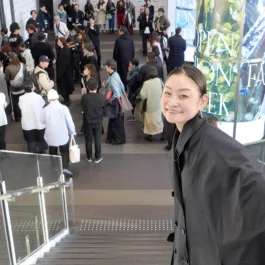Each month, American Express Essentials highlights one definitive literary work, old or new, and across any and all genres. The only determinant is quality: a book that makes life more vivid, more inspiring – a gifted piece of work you want to share. An absolute must-read.
Up this month is a debut novel of remarkable success, Australian author Rosalie Ham’s The Dressmaker. Published in 2000, the book was turned into a major motion picture of the same name in 2015, starring Kate Winslet.
Set in the meticulously crafted fictional town of Dungatar in 1950s Australia, Rosalie Ham’s debut novel is a captivating blend of love, hate and, yes, fashion, whose backdrop serves as the perfect stage for Ham’s exploration of human connection, simmering rivalries and revenge. Here, love and hate are stitched together by one woman’s talent for dressmaking.
The story begins when Myrtle “Tilly” Dunnage returns to the small town in which she grew up, and from which she had been banished 20 years before, accused of murdering a classmate at the age of 10. Having studied under an expert dressmaker in Paris, Tilly sets up a business making dresses for the women of the town, who, despite their prejudice towards her as an outcast, are taken by her exquisite designs. Just as the townspeople start to reluctantly accept her, Tilly’s dresses begin igniting old feuds and long-stewing tensions, and it becomes clear that she has her sights on more than simply making pretty clothes.
As the tale unfolds, readers are taken on a compelling journey into the intricate landscape of human behaviours and emotions. The plot artfully explores the interplay of hypocrisy, bigotry, prejudice and vanity, revealing how these very human faults can skew one’s perception of morality. At its core, this is a classic tale of revenge, of biting secrets and burning passions, as well as a portrayal of the profound darkness and radiant light within humanity, holding up a mirror to our multifaceted nature at its best and its worst. Yet, somehow, it’s love – in the broader sense of the word – that drives most of the story forward.
What truly sets this book apart is Ham’s adoption of the Gothic novel structure, a choice that will resonate with readers who appreciate mystery and suspense. Use of this genre, typically characterised by eerie atmospheres and dark, hidden secrets, allows Ham to infuse the story with a sense of foreboding and uncertainty. Much like a traditional Gothic tale, The Dressmaker is laden with secrecy and tension, pulling readers deeper into the enigmatic web of Dungatar, with its many traditions and superstitions. Not only does this structural choice make for an intriguing and unpredictable read, it also keeps readers on the edge of their seats, ensuring that the story remains a page-turner from start to finish.
The book’s smooth and seamless flow is also partially facilitated by Ham’s use of remarkably short chapters that allow readers to navigate the story with ease; this is the kind of book that you can read for 15 minutes before bed without getting lost when you pick it back up. The book is also divided into four sections, each titled after distinct types of fabric such as gingham and silk – a clever trick that serves as a metaphor for the layers of secrets and intricacies concealed within the town.
While, admittedly, The Dressmaker may not be a Pulitzer Prize-winning masterpiece, the story and the writing holds a unique charm that can easily rescue a floundering reader from a book slump. It is undeniably well-written, with prose that is engaging yet accessible, never venturing into the realm of shallow or frivolous reads and always maintaining substance throughout. In fact, Ham’s greatest strength as a writer lies in her skill for description, her ability to paint a rich, detailed picture of the world she has created, from the rooms the characters inhabit to the diverse fabrics and frocks that Tilly skillfully crafts. This novel is a visual feast, where every scene, every garment and every corner of Dungatar comes to life with cinematic quality.
Ham also possesses a flair for creating vivid characters, whom readers will come to love or hate – sometimes both at once. Selfish, rude, small-minded and vain, the townspeople of Dungatar tend to elicit strong emotions, so be prepared for them to surprise or shock from the very first pages. You might even grow to enjoy their off-beat humour. The extensive cast of characters can, however, be overwhelming, with names constantly swirling through the pages; meticulous readers will want to keep a running list.
This considerable cast of characters work as a one whole, an inter-connected community of all sorts of small-town people doing small-town things. Even though (or maybe perhaps because) they are small-town folk, the unpredictability of their actions, from the absurd to the funny to the cruel, will by turns have you laughing out loud or gasping in utter shock. And making it all believable is, perhaps, the best trick Ham has up her storytelling sleeve.
Further Reading
If you’re in search of something similar for your next read, you might want to reach for Chocolat by Joanne Harris. Or, for a slightly lesser-known option, check out Jonas Jonasson’s The Hundred-Year-Old Man Who Climbed Out the Window and Disappeared. And, of course, you should watch Jocelyn Moorhouse’s eponymous film adaptation of The Dressmaker itself.














Sorry, the comment form is closed at this time.